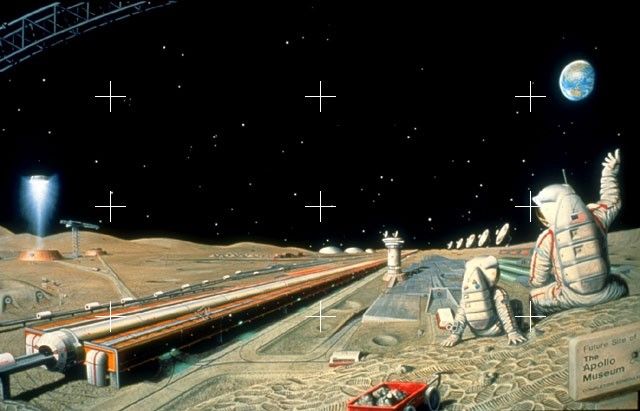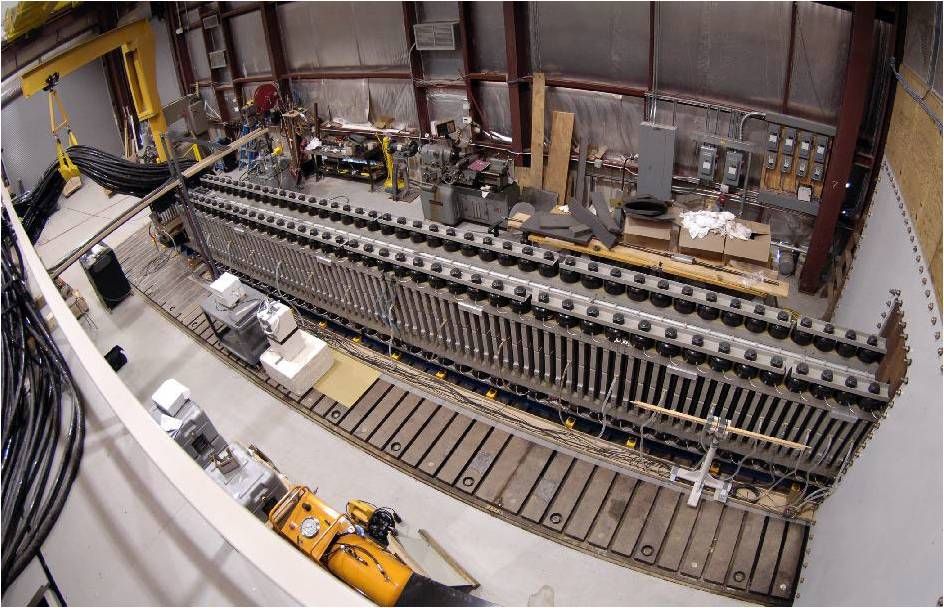In 1974, the late Princeton University professor and space visionary Gerard O’Neill proposed the use of electromagnetic railguns to lift payloads from the moon.
O’Neill suggested using “mass drivers” based on a gun model to accelerate a non-magnetic object. One application for mass drivers was to launch lunar-derived materials into lunar orbit for manufacturing in space. O’Neill also worked at MIT on mass drivers, along with colleague Henry H. Kolm, and a group of forward-thinking student volunteers, to fabricate their first mass driver prototype. Supported by grants from the Institute of Space Studies, later prototypes improved on the mass driver concept.
That was five decades ago. Catapult yourself today and ask this question: What does the US Navy’s nuclear-powered aircraft carrier Gerald R. Ford have to do with the moon?
The future lunar economy
Late last year, General Atomics Electromagnetic Systems submitted a final report to the Air Force Office of Scientific Research (AFOSR). That report was titled “Lunar Electromagnetic Launch for Harnessing Resources to Enhance National Security and Economic Growth.”
The author of this assessment is Robert Peterkin, director of operations for the organization’s office in Albuquerque, New Mexico.
The 30-page document highlights that the moon is rich in useful resources, including silicon, titanium, aluminum and iron. The prospect of tapping into lunar water also looms large.
“A lunar economy in the not-too-distant future will use these lunar resources to resupply, repair and refuel spacecraft in lunar orbit at a lower cost than sending terrestrial resources from Earth’s deep gravitational well ,” the report explains.
The latest space news, the latest updates on rocket launches, sky-watching events and more!

A lunar launcher as seen by space artist Pat Rawlings, published by the Lunar & Planetary Institute in 1985. (Image credit: LPI)
Machinery, structures, systems
Electromagnetic launches of material from the lunar surface, the report continues, can be significantly more efficient than conventional rocket launches that rely on chemical fuels imported from Earth to the Moon.
The assessment outlines recommendations for how to mature the technology needed to launch lunar material extracted and processed into space to support a variety of developing space missions.
A particularly important aspect of developing a lunar economy, the report advises, is moving mass off the lunar surface in a reliable, affordable and safe manner. “Undoubtedly, the first spiral of a development cycle for a lunar ecosystem will rely on the supply of machinery, structures and support systems from Earth.”

Superior choice
Using lunar resources to repair and resupply cis-lunar spacecraft requires advances in several technologies including a reliable way to move material off the lunar surface, Peterkin told Space.com.
For this task, a modern electromagnetic launcher is a superior choice, Peterkin said, because it can use abundant solar energy as a primary power source instead of importing chemical rocket fuel from Earth.
“The US government should fund an evolution of the existing electromagnetic aircraft launch system, which now operates reliably on the US Navy’s nuclear-powered aircraft carrier Gerald R. Ford,” Peterkin points out.
Manufactured by General Atomics, that carrier-based hardware is called the Electromagnetic Aircraft Launch System (EMALS).

The way to get there
Peterkin said moving this Earth-based technology down the road involves achieving higher speed, with lower mass — featuring work that accelerates in fast mode ahead of a lunar launch capability.
The separation velocity required to launch pound-class payloads from the lunar terrain into a low circular orbit around the moon is 3,758 miles per hour (1.68 kilometers per second).
“To prove viability, we need to demonstrate that this approach can achieve a lunar orbit velocity,” Peterkin said, “for at least 100 launches without having to replace launcher components.”
As the report for the Air Force Office of Scientific Research states, “while it is important to envision a mature state in which a self-sustaining lunar ecosystem extracts, processes, and launches materials into lunar space to build, supply, and support the spacecraft . and space settlements, it’s just as important to create a way to get there.”




Leave a Reply